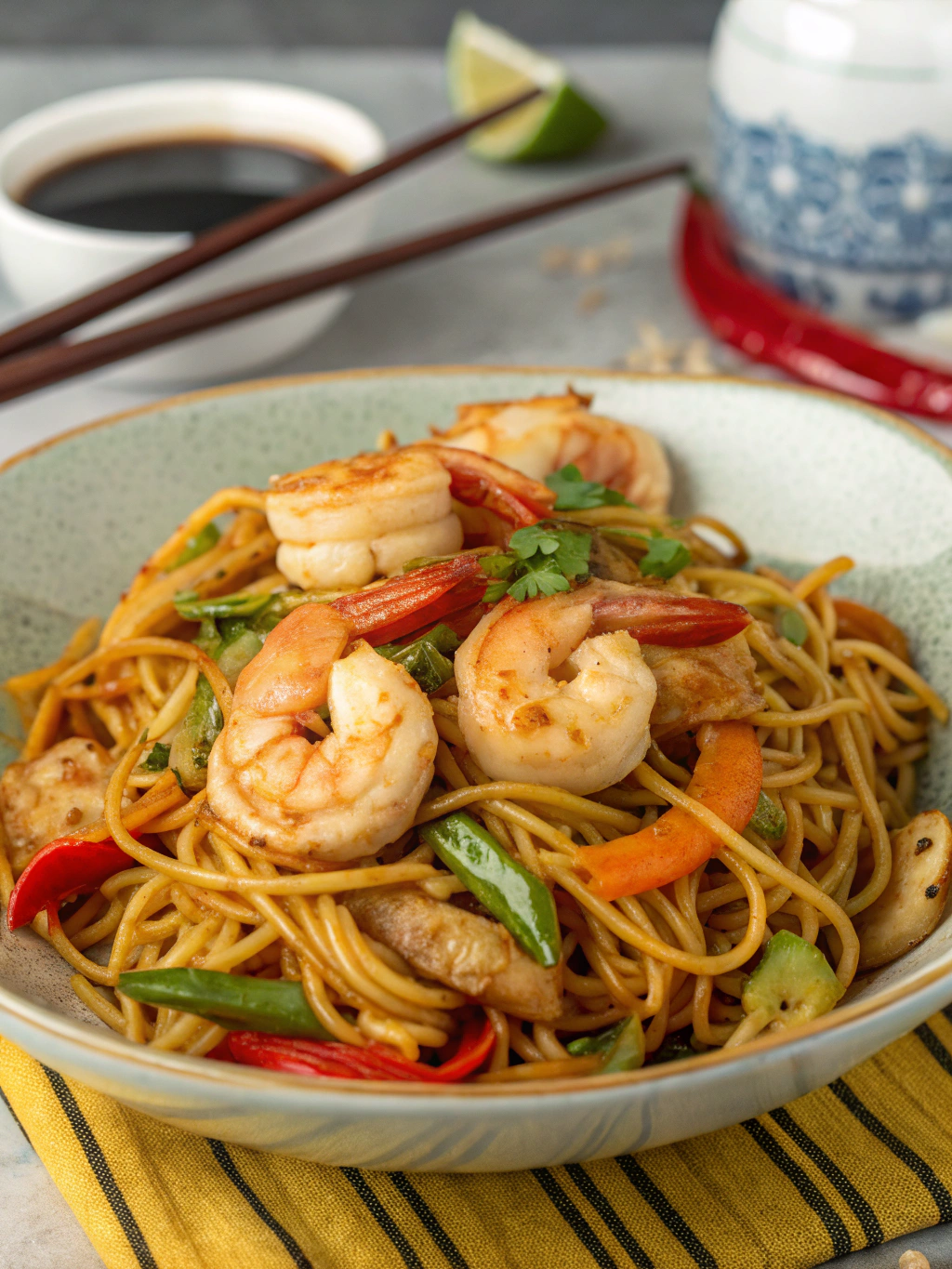Last Updated on May 6, 2025 by recipeinspire
Table of Contents
What Happens When You Add Too Much Butter to Biscuit Dough?

What Happens When You Add Too Much Butter to Biscuit Dough? Adding butter to biscuit dough is a crucial step in producing delicious, flaky biscuits. However, adding too much butter can have negative effects on the final product. When too much butter is added, the dough can become greasy and difficult to work with. The biscuits may also end up being dense, tough, and lacking in flavor.
One solution to the problem of too much butter in biscuit dough is to add more flour. For every extra tablespoon of butter, adding about 2 tablespoons of flour can help to balance out the excess butter. It is important to add the flour in small amounts, about 1/4 cup at a time, until the dough comes together and is no longer greasy. However, adding too much flour can also have negative effects on the biscuits, making them tough and dry. It is important to check the consistency of the dough after each addition of flour and to stop adding flour once the desired consistency is reached.
Another important factor in making biscuits is the temperature of the butter. When making biscuit dough, it is recommended to use cold butter that has been diced into small pieces. The cold butter helps to create the flaky layers that biscuits are known for. If the butter is too warm or soft, it can become overworked and lead to tough biscuits. By keeping the butter cold and adding it to the dough in small pieces, the biscuits will have a better chance of turning out light, flaky, and delicious.
The Role of Butter in Biscuit Dough
Butter is a crucial ingredient in biscuit dough, providing both flavor and texture. It is responsible for creating a flaky, tender crumb and a crisp exterior. When added to biscuit dough, butter coats the flour particles, preventing them from absorbing too much liquid and creating a tough dough.
However, adding too much butter to biscuit dough can have negative consequences. The excess butter can cause the dough to become too soft and sticky, making it difficult to handle and resulting in biscuits that spread too much during baking. Additionally, too much butter can cause the biscuits to have a greasy texture and an overpowering butter flavor.
To avoid adding too much butter to biscuit dough, it is important to measure the ingredients accurately and follow the recipe closely. If the dough seems too soft or sticky, additional flour can be added to balance out the excess butter.
In summary, while butter is a key ingredient in creating delicious biscuits, it is important to use it in moderation to achieve the perfect balance of flavor and texture.
Related Posts:
Effects of Excessive Butter
When adding too much butter to biscuit dough, several effects can occur. These effects can alter the texture, flavor, and cooking time of the biscuits.
Texture Alterations
Butter is a crucial ingredient in biscuit dough. It provides moisture and fat that help create a tender and flaky texture. However, adding too much butter can cause the dough to become greasy and heavy. The biscuits may spread out too much during baking, resulting in a flatter and denser texture.
To counteract the effects of excessive butter, bakers can add more flour to the dough. For every extra tablespoon of butter, adding about two tablespoons of flour can help absorb the excess moisture and fat. However, adding too much flour can cause the biscuits to become tough and dry.
Flavor Changes
Butter is also responsible for the rich and buttery flavor of biscuits. However, adding too much butter can overpower the other flavors in the dough, making the biscuits taste greasy or bland.
To balance the flavor, bakers can add more salt or other seasonings to the dough. Alternatively, they can reduce the amount of butter in the recipe and adjust the other ingredients accordingly.
Cooking Time Adjustments
Excessive butter can also affect the cooking time of biscuits. The biscuits may take longer to cook or may not cook evenly, resulting in some biscuits being undercooked while others are overcooked.
To adjust the cooking time, bakers can reduce the oven temperature and increase the baking time. They can also use a lower rack in the oven to prevent the bottoms from burning while the tops are still undercooked.
In summary, adding too much butter to biscuit dough can alter the texture, flavor, and cooking time of the biscuits. Bakers can counteract these effects by adjusting the other ingredients or making changes to the baking process.
How to Correct Over-Buttered Dough
When too much butter is added to biscuit dough, it can negatively affect the texture and flavor of the final product. However, there are ways to correct the issue and salvage the dough. Here are some methods to adjust over-buttered dough:
Dough Adjustment Methods
- Add more flour: Adding more flour to the dough can help balance out the excess butter. Start by adding a tablespoon of flour at a time until the dough is less greasy and easier to work with. Be careful not to add too much flour, as this can result in dry and tough biscuits.
- Reduce liquid: If the dough is too wet due to the excess butter, reducing the amount of liquid in the recipe can help. Remove a tablespoon of liquid for every tablespoon of extra butter added. Mix the dough and check the consistency. It should be slightly stiff but still pliable.
- Add more baking powder: If the dough is too heavy and dense, adding more baking powder can help. Baking powder is a leavening agent that helps biscuits rise and become fluffy. Add an extra teaspoon of baking powder to the recipe and mix well.
Baking Adjustments
- Adjust baking time: If the biscuits are over-browned or burnt due to the excess butter, reducing the baking time can help. Keep a close eye on the biscuits while they bake and remove them from the oven as soon as they are golden brown.
- Lower oven temperature: If the biscuits are browning too quickly, lowering the oven temperature can help. Reduce the temperature by 25 degrees Fahrenheit and continue baking until the biscuits are done.
- Use a different baking method: If the biscuits are not turning out well in the oven, trying a different baking method can help. For example, frying the dough in oil or cooking it on a griddle can create a different texture and flavor.
In conclusion, adding too much butter to biscuit dough can be easily corrected by adjusting the dough or baking methods. By following these tips, you can still create delicious and fluffy biscuits even if you accidentally added too much butter.
Preventing Butter Overuse
When making biscuit dough, it’s important to measure ingredients precisely to avoid overusing butter. Here are some tips to prevent butter overuse:
- Follow the recipe: Make sure to read the recipe carefully and follow the instructions precisely. Pay attention to the amount of butter required and measure it accurately.
- Use a kitchen scale: Measuring ingredients by weight is more accurate than measuring by volume. Use a kitchen scale to measure the butter and other ingredients.
- Chill the butter: Cold butter is easier to cut into small pieces and incorporate into the dough. Chill butter in the refrigerator before using it in the recipe.
- Cut the butter into small pieces: Cutting butter into small pieces helps it distribute evenly throughout the dough. Use a pastry cutter or two knives to cut the butter into small pieces.
- Mix the ingredients gently: Overmixing the dough can cause the butter to melt and lead to tough biscuits. Mix the ingredients gently, just until the dough comes together.
By following these tips, you can prevent butter overuse and ensure that your biscuits turn out light and flaky.
Conclusion
In conclusion, adding too much butter to biscuit dough can lead to a variety of issues. The dough may become too soft and difficult to handle, resulting in biscuits that spread too much in the oven. The texture of the biscuits may also be affected, becoming greasy or crumbly.
However, there are ways to fix the dough if too much butter has been added. One option is to adjust the other ingredients proportionally, as suggested by Into The Cookie Jar. This involves adding more of the other ingredients to balance out the excess butter. Additionally, chilling the dough before baking can help prevent spreading and improve the texture of the biscuits.
Overall, it is important to measure ingredients accurately and follow recipes closely to avoid adding too much butter to biscuit dough. With a little care and attention, delicious, perfectly textured biscuits can be achieved every time.
Frequently Asked Questions
How does adding too much butter affect the texture of biscuit dough?
Adding too much butter to biscuit dough can lead to a greasy and heavy texture. The excess butter can also cause the biscuits to spread too thin while baking, resulting in a flat and crispy texture.
What are some common issues with biscuit dough that has too much butter?
Biscuit dough with too much butter can be difficult to work with and may not hold its shape properly. The excess butter can also cause the dough to become greasy and difficult to handle.
Can you still salvage biscuit dough that has too much butter?
Yes, you can still salvage biscuit dough that has too much butter. One way to do this is by adding more flour to the dough to balance out the excess butter. Another option is to chill the dough before baking, which can help prevent excessive spreading.
What is the recommended amount of butter to add to biscuit dough?
The recommended amount of butter to add to biscuit dough varies depending on the recipe. Generally, it is recommended to use no more than 1/2 cup of butter for every 2 cups of flour.
How does butter contribute to the rise of biscuit dough?
Butter contributes to the rise of biscuit dough by creating pockets of steam as it melts during baking. This steam helps to lift the dough and create a light and fluffy texture.
Are there any substitutes for butter in biscuit dough?
Yes, there are several substitutes for butter in biscuit dough, including margarine, shortening, and coconut oil. However, it is important to note that these substitutes may alter the flavor and texture of the biscuits.








